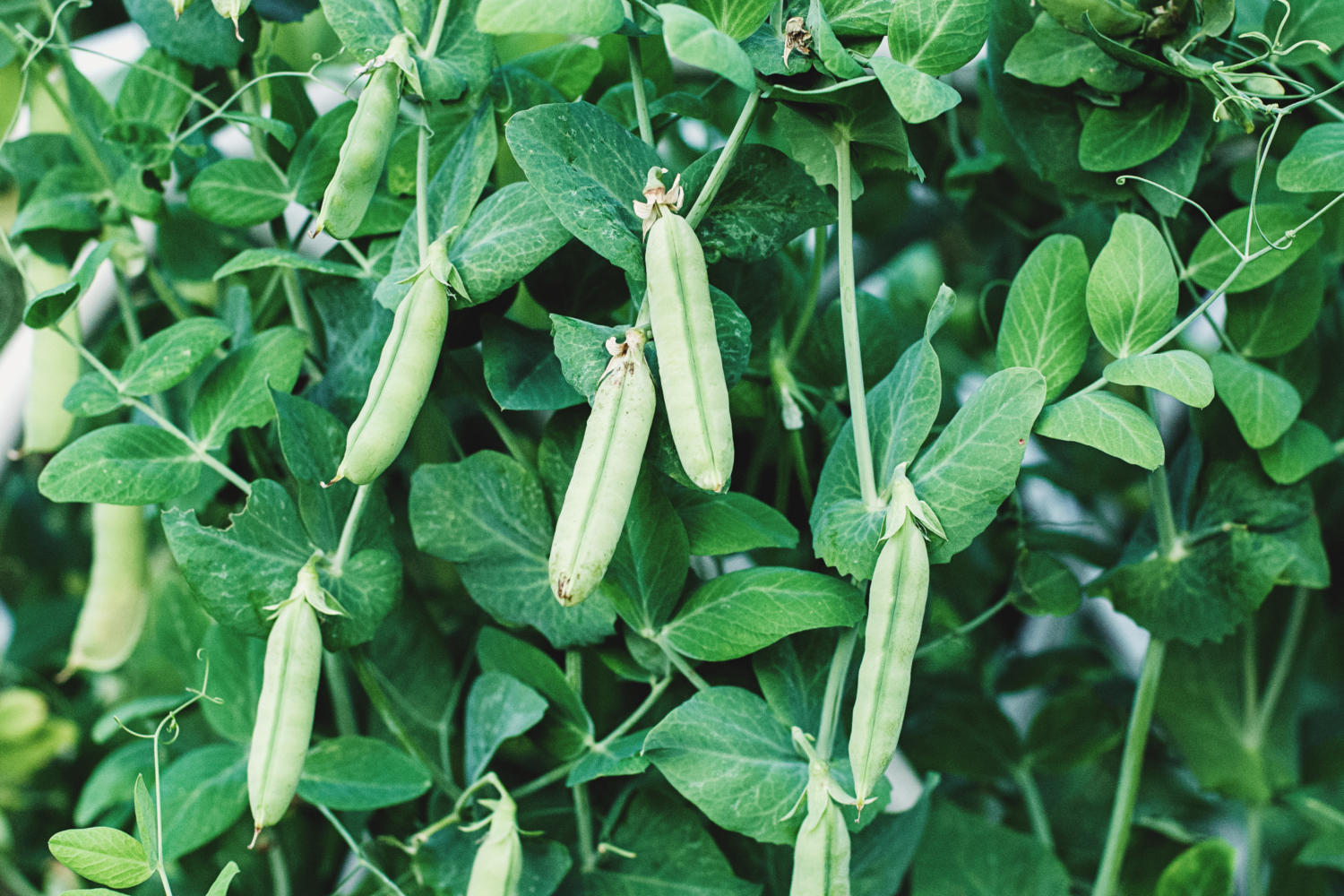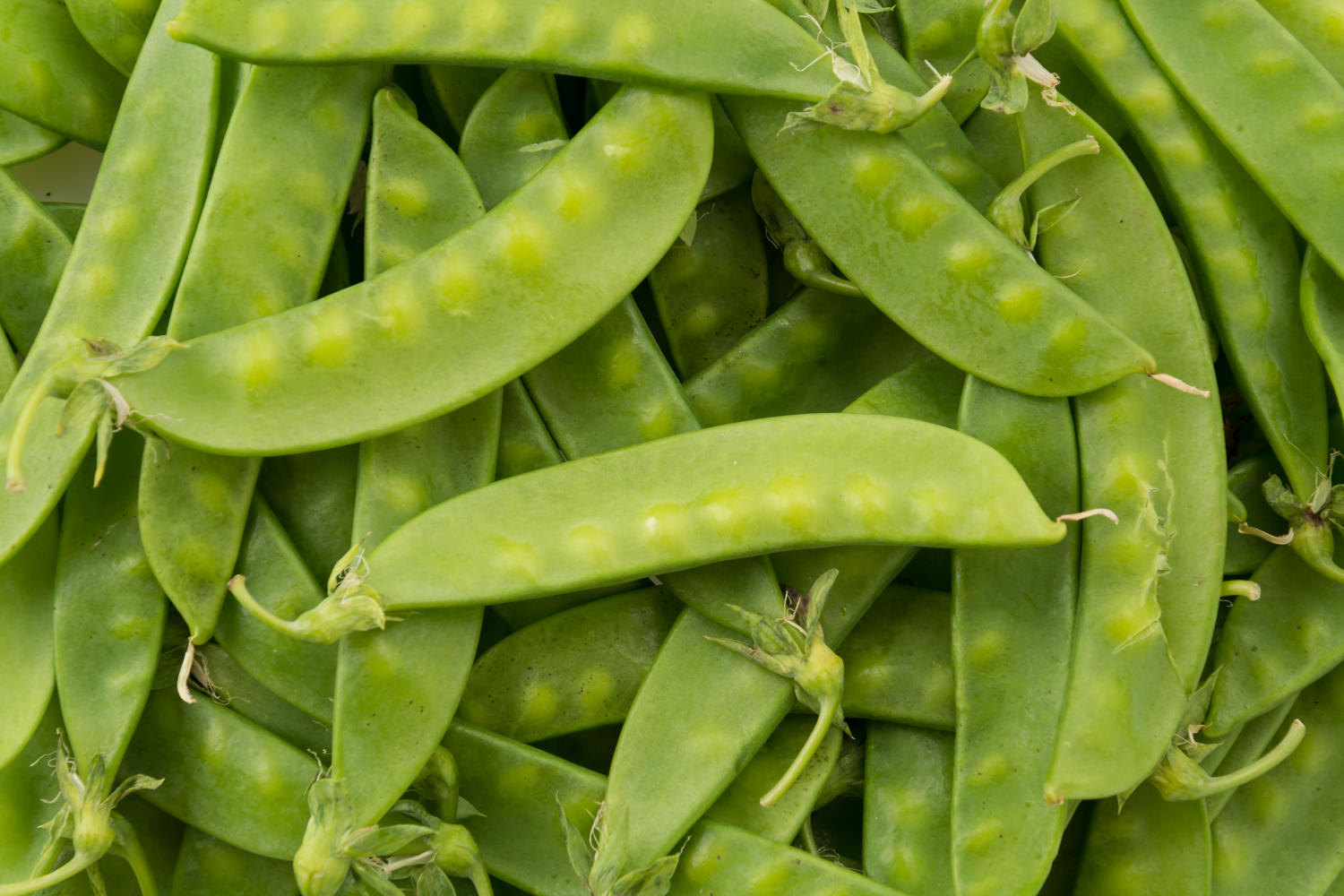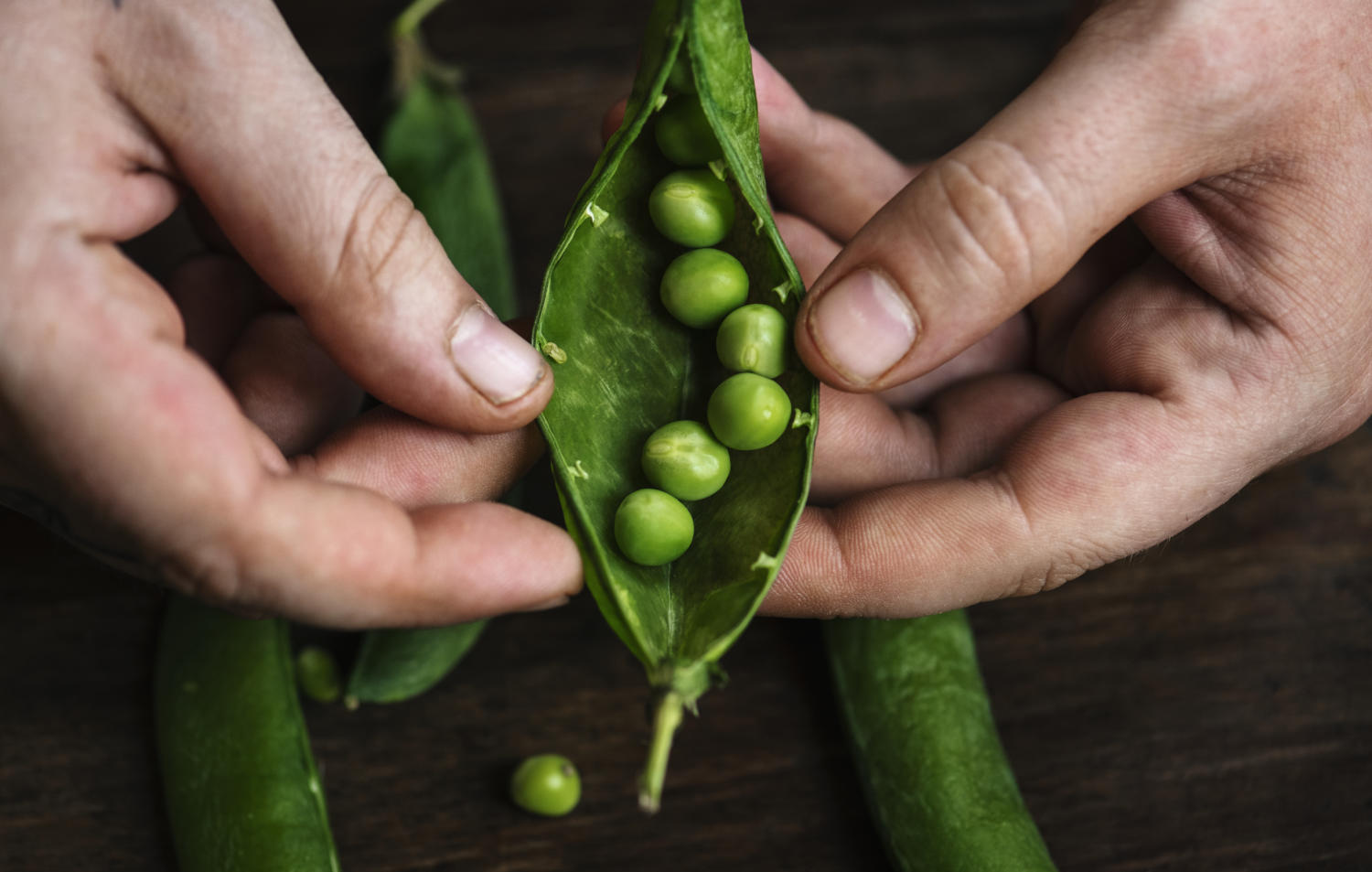
Mangetout peas are one of those ‘new’ vegetables that were almost unheard of back in the last century. Unfortunately, like some other fruit and vegetables that have become popular, most mangetouts sold have a high carbon footprint. Not only are they usually cloaked in packaging, but most will have clocked many food miles. Kenya, Guatemala, and India are some of the countries from which mangetouts are imported. And, carbon emissions aren’t the only concern. Mangetout peas are often found to contain relatively high chemical residues.
For all these reasons, there’s a lot to be said about growing your own. This is perfectly possible, although not especially easy. Mangetouts are types of peas with tender pods that can be eaten whole before the peas inside swell. Mangetout, from the French, ‘eat all’, is the name usually used in British English; confusingly in the US, and now sometimes here, they are known as ‘snow peas’. Mangetouts also need to be distinguished from ‘sugar snaps’. These are similar, but the peas inside the pod are allowed to swell before everything, peas, and pod, are eaten.

Late March and April are the best times to get mangetout peas going. If only a small crop is wanted, plants can be started in pots, or better still root trainers, inside and planted out from mid-April onwards. However, as quite a lot of plants are needed for a decent number of pods it can be more effective to sow directly into the soil. If doing this, the best method is to place the seeds in a spade-wide ‘drill’ (a shallow groove) no more than five centimetres deep in a grid pattern at around five centimetres apart.
The above is generally the easy bit unless the soil is cold or wet and the seeds fail to germinate. Once up, as with ordinary peas, the seedlings need both to be protected from birds, especially pigeons, and given something, such as netting or sticks, up which to scramble. Some varieties of mangetout are tall growing. A few, notably Carouby de Maussane, can reach two metres. Edible pods should start to form ten weeks after sowing. It’s then important to keep picking. Any pods left unharvested will soon toughen and become less palatable. What’s more, leaving mature pods inhibits the formation of new ones.
Early in summer, mangetouts often produce a good quality harvest. Unfortunately, in my experience, later crops, especially in dry weather, can be disappointing. The worst problem tends to be attacks by thrips. These are tiny, easily overlooked, insects less than two millimetres long that suck the foliage and pods causing a slivery brown discolouration. Another problem is mildew, usually of the powdery type, that causes plants to die back prematurely.

Despite these hazards, I try a few batches of mangetout peas every year. Usually, it’s possible to get reasonable quality and quantity through late June and early July. I avoid the tall types that are difficult to keep from sprawling preferring the shorter variety,
Delikata. Another I’ve tried recently is the new purple podded variety Shiraz. This looks attractive on the plants and is tender if harvested when small. It does reach well over a metre though, so requires good support to stay upright.











Add a comment